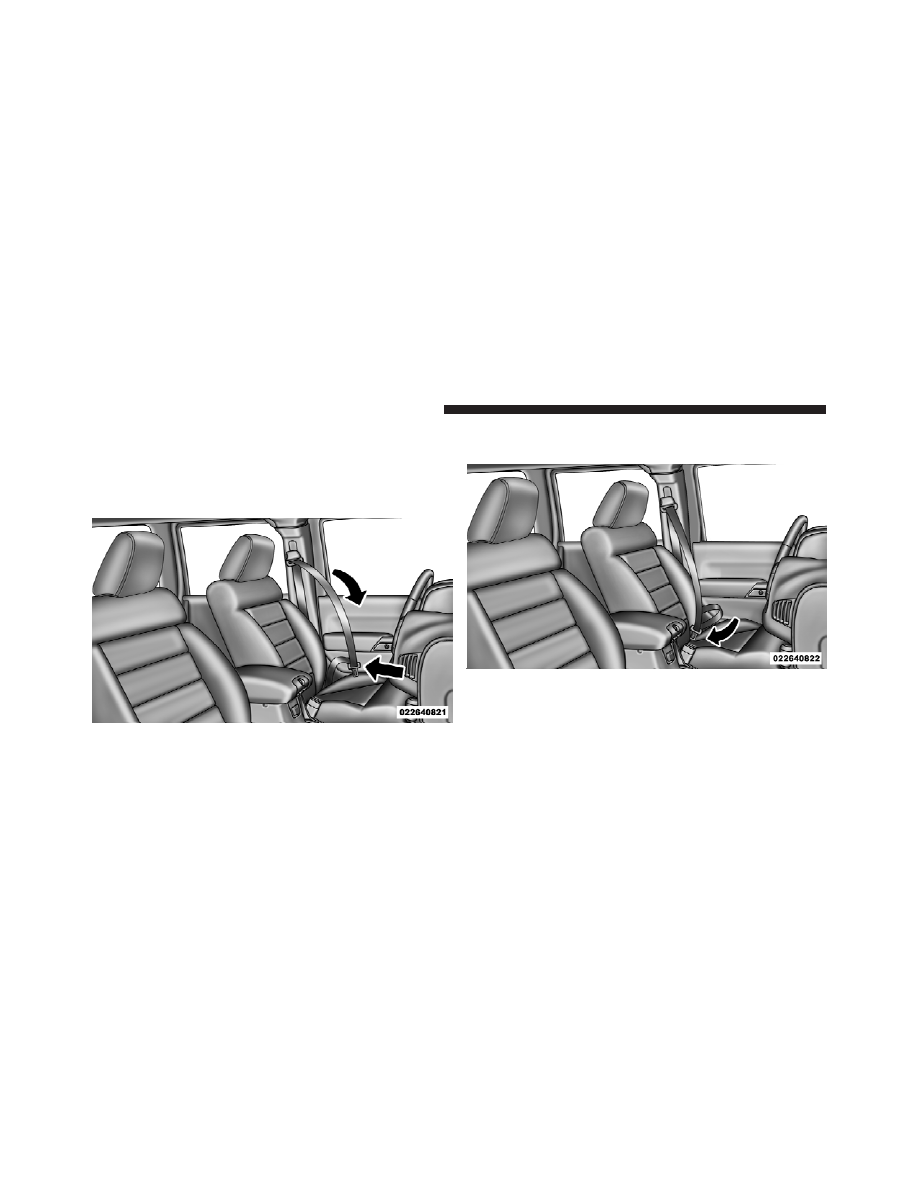Jeep Wrangler Unlimited (2012 year). Instruction - part 4

2. The seat belt latch plate is above the back of the front
seat and next to your arm in the rear seat. Grasp the latch
plate and pull out the belt. Slide the latch plate up the
webbing as far as necessary to allow the belt to go around
your lap.
3. When the belt is long enough to fit, insert the latch
plate into the buckle until you hear a “click.”
Pulling Out The Lap/Shoulder Belt Latch Plate
Inserting Latch Plate Into Buckle
48
THINGS TO KNOW BEFORE STARTING YOUR VEHICLE